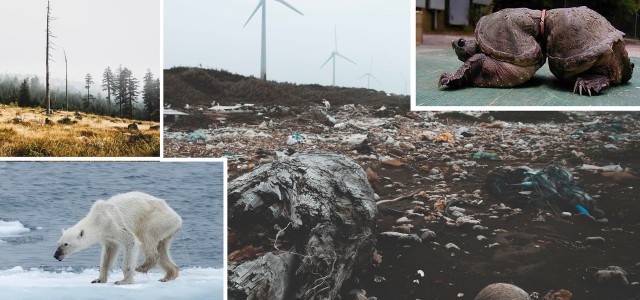Plastic islands in our oceans, melting glaciers, workers exploited for capital gain – our consumption habits have catastrophic consequences for the future of our planet. In everyday life, these facts are surprisingly easy to ignore. But these pictures make clear, how urgently we need to act.
Note: To be able to view all the pictures, you may have to allow Utopia to show Facebook, Twitter and Instagram content by ticking the corresponding boxes below.
Orangutans Are Dying for Palm Oil
Palm oil is in nearly every second product at the supermarket – from shampoo to pizza. It’s typically produced on large monoculture plantations in Southeast Asia. In the rainforest, land for cultivation is being cleared at alarming rates. Orangutans and other animals are losing their homes. The orangutan in this picture was close to dying of starvation in a cleared rainforest grove on Borneo. He was rescued by activists. But not every animal will be so lucky – and everyone who purchases products with conventionally harvested palm oil is contributing to this catastrophe.
Our Clothing Is Polluting Asian Waterways
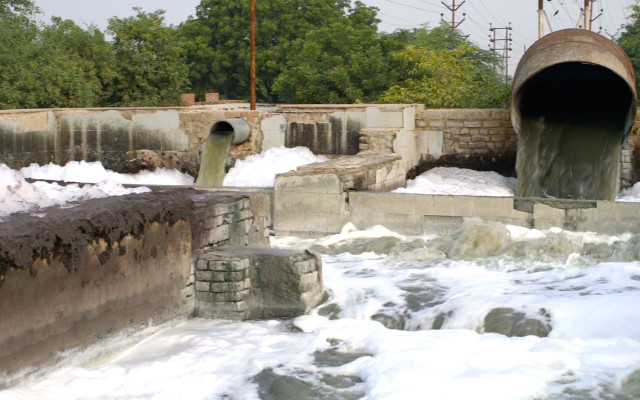
The majority of our clothing is produced in Asia, where environmental standards are often low and inspections seldom. Textile and leather factories like this one in Kanpur, India, regularly release highly toxic wastewater directly into local rivers. If you are not purposefully buying clothing from brands that produce ecologically and transparently, it’s likely that your clothing is also destroying someone else’s local environment.
Our Plastic Waste Is Poisoning Every Ocean
It seems like nearly everything in the modern world of consumption is plastic-wrapped. You may argue: “But I do recycle plastic whenever I can.” But still: Plastics find their way into the ocean in more ways than mismanaged waste.
This shocking photo above was taken by photographer Zak Noyle in Indonesia in the hope that our wave of trash could turn into a “wave of change” by raising consciousness about the problem of oceanic plastic waste. Change your consumption habits today: go plastic-free by practicing plastic-free shopping whenever you can to limit your personal impact to this growing problem.
By the way: Microplastics, too, pose a great threat to our oceans: Clothing with synthetic fibers and other household items shed tiny plastic particles. These often make their way from our drains out to rivers and lakes and may even end up in the sea.
Plastic Waste Is Killing Ocean Wildlife
Some environmentalists believe that worldwide plastic pollution is as big a threat as climate change. The waste is destroying ecosystems and endangering the lives of ocean creatures.
“This is a photo I wish didn’t exist. But since it does exist, I want everyone to see it,” commented photographer Justin Hofmann on his snapshot of a seahorse holding a cotton swab. He took the picture off the island of Sumbawa in Indonesia, where he discovered the seahorse. He wanted to take a picture of it alone, but the rising tide washed in a pile of trash which quickly flooded the animal’s environment.
Climate Change Increases the Severity of Natural Disasters
Sandy, Haiyan, Matthew, Harvey, Irma, Maria and most recently Dorian: In the last few years, the Earth has witnessed an extreme number of extremely devastating tropical storms. Yet there’s more behind their destructiveness than just weird weather: Climate change caused by our lifestyles and consumption practices doesn’t just make temperatures and ocean levels rise. Extreme weather events like storms and droughts also become stronger and more destructive – and these effects are felt everywhere, not just on the other side of the planet.
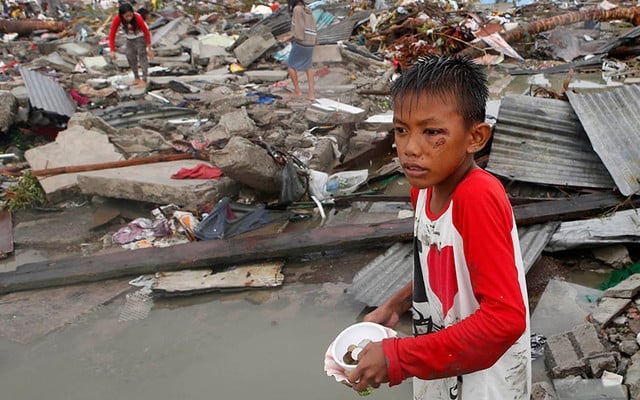


Smart and sustainable everyday decisions can make a difference. Take action and explore these 15 Everyday Ways to Combat Climate Change today.
We Waste Unbelievable Amounts of Food
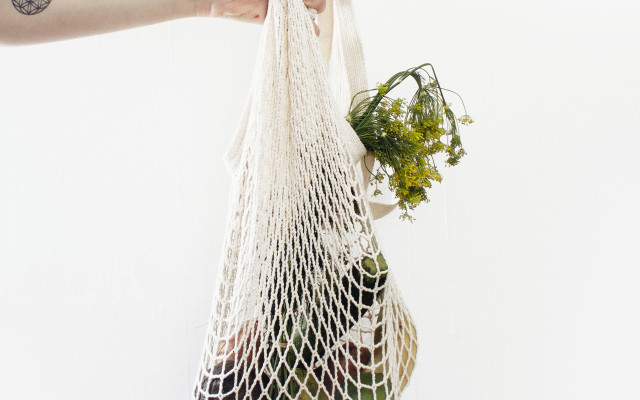


Americans dispose of nearly 150.000 tons of food every day — one third of all food stuffs in the US lands in the trash. According to the WWF, more than half of all food waste could be prevented. As consumers, our biggest role is to be more thoughtful about food generally. That means shopping consciously, not immediately tossing anything that doesn’t look perfect, and often ignoring the erroneous “best by” dates printed on foods!
Utopia’s tip: You can creatively reuse an entire bounty of lean-kitchen vegetable scraps such as radish greens, potato peels, melon seeds or cauliflower stalks – you name it. Here are just some ideas for putting kitchen scraps back onto your plate: Reuse Vegetable Scraps: Skip the Trash and put Food back on your Plate.
Meat Every Day Equals Endless Suffering
Many Americans love to eat meat that does not cost much. But cheap meat comes at a price: Chickens, pigs, and cows pay for it with miserable living conditions at factory farms. They are trapped in the smallest of spaces without any freedom to move or occupy themselves in a natural manner. Also, they are bred to grotesque body proportions, treated with antibiotics and fed with genetically modified soy from South America.
Animals raised in this new “conventional” style suffer enormously – and the environment along with them. And all this, just so that we can eat daily servings of meat. Because “It tastes so good” and “organic is way too expensive,” right?
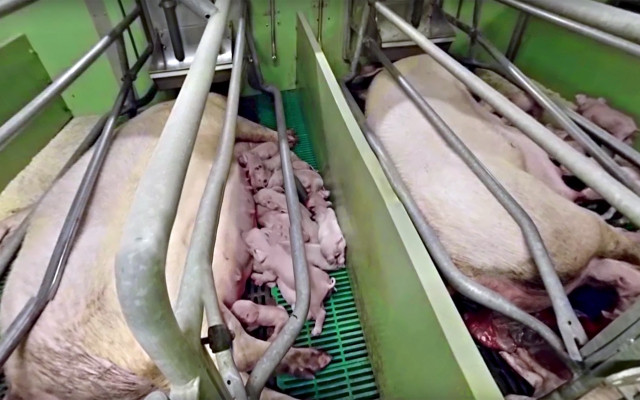


Every meat eater should watch the 360-degree film “iAnimal Pigs” which shows the world through the eyes of a factory-farmed pig.
Read more: Going vegan: 5 Simple Steps Towards a Vegan Diet
Our Electronic Cast-Offs Are Poisoning Africa
We are constantly starving for ever newer versions of smartphones, televisions, laptops, and tablets we already own. As soon as our devices show any sign of weakness, we cast them off. Despite bans on waste exports, the sheer scale of the problem means that tons of Western electronics still make their way to Africa each year. Unprotected workers and children disassemble the electronics in order to reclaim valuable raw materials within. Massive areas of land have been polluted by the poisonous substances released when burning or otherwise taking apart these electronics. Agbogbloshie, Ghana, has thus become a tragic symbol of our societal discarding frenzy.
Read more: How to Consume Less: 7 Steps to Greater Independence
Our Garbage Maims Ocean Life
Bits of plastic and other plastic waste arrive in our oceans by many means. For ocean life like fish, whales, sea birds, and sea turtles, this trash can be deadly: They become entangled or wounded by it or inadvertently swallow it. This turtle became a symbol of the plastic waste crisis. It got caught in a plastic ring when it was just a baby. Its shell and body then grew abnormally around the ring.
The picture is extreme – and the number of animals suffering due to plastic waste in our oceans is equally so: According to the data presented at The Ocean Conference hosted by the United Nations, every year up to 100,000 marine mammals and one million sea birds die as a result of garbage. At least 136 types of sea life are known victims of entanglement and strangulation at the hands of plastic waste. At least 43 percent of all whale and dolphin types, over one third of sea birds, every type of sea turtle, and many types of fish inadvertently swallow garbage.
Read more: Pacific Garbage Screening Will Remove Tons of Plastic Waste from the Ocean
Others Pay the True Price of Our Cheap Clothing Habit
As cheaply as we can buy clothes, you would never imagine how dearly others pay for it: like the textile workers, usually female, in factories in Bangladesh, China, and other low-wage countries. These innumerable, anonymous seamstresses create your wardrobe for starvation wages, working long hours with no overtime pay in decrepit buildings without any form of security – personal or social.
The collapse of a textile factory called Rana Plaza in Dhaka, Bangladesh, in 2013, brought some of these issues to light. It cost 1,138 people their life and injured another 2,500. The factory produced clothes for several international high street brands.
It doesn’t matter where you shop: if you don’t purchase your clothing from fair fashion labels, you must consider that your clothing was probably made under inhumane conditions. One alternative: Buy used clothing! This reduces the demand for new production.
Mindful consumption helps us to reduce stress as well as accumulating unnecessary items items, teaches us how to be more sustainable and lets us appreciate what we have.
Here’s an idea: Create your own minimalist wardrobe. This guide provides an introduction to everyday practices in line with current approaches to minimalist living.
We’re Simply Letting the Ice Caps Melt
As we all know, our wasteful consumerism – our meat consumption, our oil usage, our coal-powered factories – has made us complicit in climate change. Two of the hardest-hit victims are the Earth’s North and South Poles. Glaciers in the Arctic and Antarctic are melting at astonishing rates, threatening the homes of humans and animals alike. One sad symbol of this development is this starving polar bear. Photographer Kerstin Langenberger took this picture in Norway in 2015.
The experienced polar photographer wrote in a moving Facebook post, “Many times I have seen horribly thin bears, and those were exclusively females – like this one here. […] How can a population be stable if it consists of fewer and fewer females and cubs?”
Child Labor for Our Luxuries
Child labor is still widespread and a problem in many industries. Indeed, many luxury items are products of child labor on the other side of the world: cocoa, coffee, and tobacco, for example. The only way to ensure that children were not involved in the production of your favorite treats is to purchase fair trade goods. Or at the very least pay attention to what country your coffee or chocolate comes from.
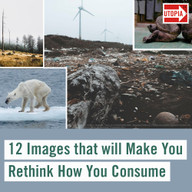


Read more:
- The Amazon is up in Flames – 9 Things You Can Do
- Avocado Benefits: How Healthy is this Trending Superfood?
- Swai Fish: 5 Reasons Not to Eat Pangasius
This article was translated from German into English. You can view the original here: 13 Bilder, die zeigen, warum wir unseren Konsum dringend ändern müssen
** Links to retailers marked with ** or underlined orange are partially partner links: If you buy here, you actively support Utopia.org, because we will receive a small part of the sales proceeds. More info.Do you like this post?






